Embarking on a research journey, especially without the help of statistical consultants, often feels like standing at a buffet with two equally delicious but very different dishes: qualitative and quantitative methods. Do you go for the rich, narrative flavor of qualitative or the precise, statistical punch of quantitative? Well, mixed methods research says, “Why not both?” This approach is like creating the ultimate combo meal, harnessing the strengths of both qualitative and quantitative data to provide a comprehensive understanding of complex phenomena.

In today’s fast-paced, data-driven world, mixed methods research has become a powerful tool. The rapid advancements in technology and the increasing availability of data mean researchers are now more equipped than ever to whip up some truly delicious insights. In this situation, I would say, picture yourself as a master chef in a bustling kitchen, with access to the finest ingredients and cutting-edge appliances.
With mixed methods, often abbreviated as MM, imagine you trying to understand the secret to the perfect cup of coffee. In this case, you could survey hundreds of coffee drinkers to get quantitative data on their preferences. Then, by conducting in-depth interviews with a few coffee aficionados, you get qualitative data that explains why they prefer a specific brewing method. Together, these insights give you the full recipe for success. In this however, it is important to ensure that you are first well equipped with the principle of qualitative analysis, as well as the principles of quantitative analysis.
Understanding the basics of mixed methods research is essential, and this introduction to mixed methods research provides a solid foundation. For more practical applications, John Creswell (a seminal author in the field of mixed methods research) offers insights into structuring your study in most, if not all his books.
Whether you are a seasoned researcher or just starting, these strategies will help you navigate the complexities of mixed methods research and enhance the quality of your data collection efforts. Stay tuned as we get into the specifics of designing your study, choosing the right data collection techniques, and integrating qualitative and quantitative data to better understand your research questions. The goal is to equip you with the knowledge and tools to make your mixed methods research both rigorous and insightful.
Understanding Mixed Methods Research
Mixed methods research integrates qualitative and quantitative approaches to provide a more complete understanding of research problems. As Johnson et al. (2007) describe, it involves the collection, analysis, and integration of both qualitative and quantitative data within a single study or a sustained program of inquiry. This yin-yang approach, as most statistician consultants would call it, allows researchers to draw on the strengths of both methodologies while compensating for their weaknesses respectively.
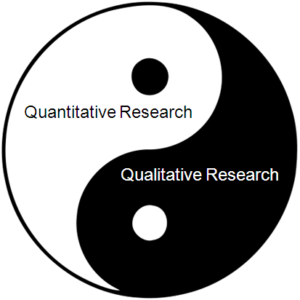
For instance, consider the efforts to understand the impact of social media on mental health. Researchers might use quantitative surveys to gather data on the frequency of social media use and its correlation with mental health indicators like anxiety and depression. Simultaneously, they could conduct qualitative interviews to get into users’ personal experiences, exploring how and why social media affects their mental well-being. This mixed methods approach enables researchers to identify broad patterns through quantitative data while gaining deeper insights through qualitative data, thus providing a comprehensive understanding of the issue.
To see how mixed methods research can be applied in various contexts, you can explore practical examples and techniques for integrating qualitative and quantitative data. Exposure to the foundational understanding of mixed methods research also provides clear guidelines for designing and conducting studies. If you’re looking to deepen your knowledge, it is advisable to connect with research experts, who can assist you and guide you in understanding the more complex and sophisticated concepts of mixed methods research.
Leveraging the strengths of both qualitative and quantitative approaches, mixed methods research provides a more holistic understanding of complex issues. This approach benefits from the complementary strengths of both methodologies, allowing researchers to capture the breadth and depth of their research topics.
Quantitative data offers several key advantages. Through the use of large sample sizes and statistical analysis, quantitative research enables findings to be generalized across larger populations. This means that the results obtained from a sample can be reasonably applied to the broader population from which the sample was drawn. Additionally, statistical techniques used in quantitative research allow for the identification of patterns and trends within the data. For example, researchers can use regression analysis, factor analysis, and other statistical methods to uncover relationships and correlations between variables.
On the other hand, qualitative data adds depth and richness to the research. Qualitative research methods, such as interviews, focus groups, and ethnography, provide in-depth insights into individual experiences, beliefs, and motivations. This type of data captures the complexity of human behavior and social phenomena that might be missed by quantitative measures alone. Furthermore, qualitative data helps to understand the context within which individuals operate. It allows researchers to explore the ‘why’ and ‘how’ behind observed behaviors and trends, providing a narrative that explains the quantitative findings.
By combining both types of data, mixed methods research enables researchers to address research questions more comprehensively. Mixed methods research offers a fuller picture by integrating numerical data with detailed narratives. For instance, a study on educational outcomes might use test scores (quantitative) to measure performance and interviews (qualitative) to understand students’ learning experiences and challenges. The integration of qualitative insights with quantitative data strengthens the validity and reliability of the research findings. Qualitative data can provide context to the quantitative results, making them more meaningful and actionable. Using both methods can enhance the overall validity of the research. Quantitative data can confirm and generalize the qualitative findings, while qualitative data can explain and contextualize the quantitative results.
Designing a Mixed Methods Study
Effective mixed methods research begins with a well-thought-out design. Creswell et al. (2004) emphasize the importance of clearly defining the purpose of the study and the rationale for using mixed methods. This involves specifying how the qualitative and quantitative components will complement each other to address the research questions.
Researchers should consider several design options, such as convergent parallel design, explanatory sequential design, exploratory sequential design, and embedded design, as outlined by Tashakkori and Teddlie (2010). Each design has its unique advantages and can be tailored to the specific needs of the study. For example, the convergent parallel mixed methods allow for the simultaneous collection and analysis of qualitative and quantitative data, making it possible to compare and combine the results at the end of the study. This design is particularly useful when researchers need to validate findings across different data sources.
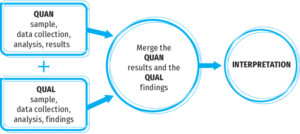
An explanatory sequential design, conversely, begins with the collection and analysis of quantitative data followed by qualitative data collection to further explain or explore the initial findings. This approach is ideal when initial quantitative results need deeper exploration to understand the underlying reasons or mechanisms.
Exploratory sequential design reverses this order, starting with qualitative data collection to explore a phenomenon, followed by quantitative data collection to test or generalize the initial qualitative findings. This design is beneficial when the research problem is not well understood and requires initial exploration. Lastly, the embedded design integrates qualitative and quantitative data collection within a single study, where one type of data provides a supportive, secondary role to the other. This approach is useful in complex studies where different types of data are needed to address different aspects of the research question.
Understanding and choosing the appropriate design is crucial for the success of a mixed methods study, ensuring that the qualitative and quantitative components work together to provide a comprehensive understanding of the research problem.
Strategies for Optimizing Data Collection
Sequential vs. Concurrent Timing
One key strategy in mixed methods research is deciding between sequential and concurrent timing for data collection. Sequential data collection involves collecting qualitative and quantitative data in phases. This approach allows the findings from one phase to inform the subsequent phase, enhancing the depth and breadth of the research. For instance, quantitative data might identify trends that are then explored in more detail through qualitative interviews, providing a richer understanding of the findings (Creswell & Plano, 2011).
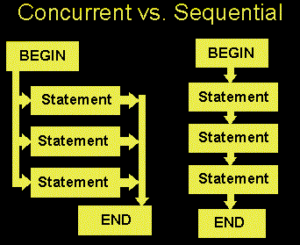
On the other hand, concurrent data collection involves collecting qualitative and quantitative data simultaneously. This strategy can save time and resources while allowing for the triangulation of findings, which can enhance the validity of the results. Collecting both types of data simultaneously provides a more comprehensive snapshot of the research problem, making it possible to cross-validate and corroborate findings from different data sources (Clark & Ivankova, 2016).
Deciding between these two approaches depends on the research questions and objectives. Sequential designs are beneficial when one type of data is needed to inform the other, whereas concurrent designs are useful for validating findings through multiple data sources simultaneously. Understanding the strengths and applications of each approach is essential for optimizing mixed methods data collection and ensuring comprehensive and robust research outcomes.
Integration Techniques
Effective integration techniques are crucial for optimizing mixed methods research. One such technique is data triangulation, which uses multiple data sources to cross-verify findings, thereby increasing the credibility and validity of the results. Data triangulation involves comparing qualitative and quantitative data to identify common patterns and discrepancies, which can provide a deeper understanding of the research problem (Johnson et al., 2007). Another important technique is merging data or mixed methods data integration, which combines qualitative and quantitative data during analysis to offer a more comprehensive understanding of the research problem. For instance, qualitative themes can be quantified to identify the prevalence of certain perspectives within the data, adding depth and detail to the findings (Creswell & Plano, 2011). This approach can be particularly useful in mixed methods studies where understanding the context and scale of phenomena is essential.
These integration techniques allow researchers to leverage the strengths of both qualitative and quantitative data, ensuring that their findings are robust and well-rounded. Understanding and applying these techniques effectively can significantly enhance the quality and impact of mixed methods research.
Prioritizing Data
Prioritizing data is a crucial step in mixed methods research, as researchers must decide which data type—qualitative or quantitative—will take precedence in the study. This decision should align with the study’s overall purpose and research questions. In some studies, qualitative data analysis might be applied in explaining and adding context to quantitative findings. For instance, detailed interviews can provide deeper insights into trends identified through surveys, making the results more meaningful and comprehensive (Doyle et al., 2009).
In other cases, quantitative research methods and data might be used to generalize qualitative insights. For example, researchers might start with in-depth qualitative interviews to explore a phenomenon and then use quantitative surveys to test the prevalence of these findings across a larger population. This approach helps in validating and extending qualitative insights to a broader context (Doyle et al., 2009).
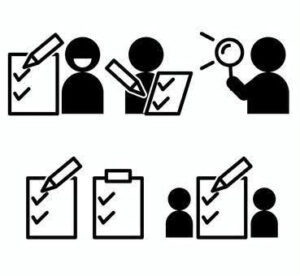
Choosing which data type to prioritize depends on the specific needs and goals of the research. It is essential to carefully consider how each type of data will contribute to answering the research questions and achieving the study’s objectives. Understanding and making informed decisions about data prioritization ensures that the research design is coherent and that the data collected are used effectively to provide comprehensive and meaningful insights.
Using Technology
Leveraging technology can streamline the data collection process in mixed methods research. Online surveys, digital interviews, and data analysis software enhance both efficiency and accuracy. For instance, tools like NVivo or Atlas.ti help in managing and analyzing large qualitative datasets, providing robust support for coding and theme development. These tools allow researchers to handle vast amounts of text data systematically, ensuring thorough and organized analysis (Ivankova & Creswell, 2009).
On the quantitative side, statistical software like SPSS or R is invaluable for handling data analysis. These tools offer a wide range of statistical tests and procedures, enabling researchers to analyze data with precision. Whether it’s running complex statistical models or creating detailed graphs and charts, these programs help make quantitative data analysis more manageable and insightful. The integration of such digital tools in research not only enhances the efficiency of the research process but also improves the accuracy and reliability of the findings. Automating parts of the data collection and analysis process allows researchers to focus more on interpreting the results and drawing meaningful conclusions.
Additionally, using cloud-based platforms for data storage and sharing, such as Google Drive or Dropbox, facilitates collaboration among research team members. These platforms ensure that data is accessible and securely stored, which is crucial for maintaining data integrity and confidentiality. Furthermore, employing mobile apps for data collection in field research can greatly enhance the convenience and speed of gathering data in real-time, especially in remote locations.
Using technology effectively in mixed methods research ensures that both qualitative and quantitative data are collected and analyzed with high precision, leading to more robust and reliable research outcomes. This integration of technology not only streamlines the research process but also enhances the overall quality and impact of the research findings.
Addressing Challenges in Mixed Methods Research
Addressing challenges in mixed methods research is crucial for achieving robust and reliable results. Researchers must be adept at both qualitative and quantitative methods, which requires a diverse skill set and a thorough understanding of each approach. Integrating data from different sources can be complex and time-consuming, demanding careful planning and execution.
Critical reflection throughout the research process is essential, as highlighted by Fàbregues et al. (2021). Researchers should continuously assess the integration of qualitative and quantitative components to ensure that the study remains coherent and that the data are effectively combined to address the research questions. This process involves regularly revisiting the research design and methods to check for consistency and alignment. Understanding the unique challenges of mixed methods research and actively working to address them can significantly improve the quality and impact of the study. Ensuring that the study remains coherent and the data are well-integrated requires ongoing effort and attention to detail.
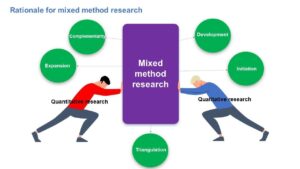
Effective mixed methods research demands continuous assessment and adaptation. This approach helps in addressing the complexities of combining different types of data, ultimately leading to richer and more meaningful research outcomes.
Now, let me share a personal story that highlights the importance of flexibility and humor in research. During my own mixed methods dissertation, I decided to conduct both surveys and interviews to understand the impact of social media on college students’ study habits. I had planned everything meticulously—timelines, participant recruitment, data collection tools. However, things took an unexpected turn when my first batch of survey responses came back, and I realized I had accidentally set the age range to 50-65 instead of 18-25. Instead of insightful comments on study habits, I got a lot of feedback on the best gardening tips and how to manage knee pain!
Initially, I panicked, but then I decided to use this as a learning experience. I corrected the survey and re-sent it to the right age group. This mistake turned out to be a funny anecdote I shared during my defense, illustrating the importance of careful attention to detail and the ability to adapt when things don’t go as planned. And who knows, maybe one day I’ll use that data on knee pain for another project!
Remember, research is as much about the journey as it is about the results. Embrace the unexpected, learn from it, and keep your sense of humor intact.
Conclusion
As you can now see, optimizing mixed methods data collection involves strategic planning and thoughtful integration of qualitative and quantitative approaches. Careful design, appropriate data collection strategies, and addressing potential challenges are key to achieving richer insights and more robust findings.
Think of it like baking a cake: you wouldn’t just throw flour and sugar together and hope for the best; you need the right recipe, the correct mix of ingredients, and attention to detail to get that perfect result. Mixed methods research, when done well, is like that perfect cake—providing a comprehensive understanding of complex phenomena and making it an indispensable tool in a researcher’s arsenal. And remember, just like in baking, don’t be afraid to laugh at the occasional mishap; it’s all part of the process. So, grab your mixing bowl, get those qualitative and quantitative ingredients ready, and start baking up some groundbreaking research!
Collaborating with expert data analysts or data analytics companies in the USA can greatly enhance the quality and reliability of your research. These experts bring specialized skills in both qualitative and quantitative methods, ensuring that your mixed methods research is comprehensive and insightful. Whether you are conducting program evaluation or survey development, leveraging the expertise of data analytics firms and statistical consulting services can lead to more robust and meaningful research outcomes.
Data analytics companies offer a wide range of services, including advanced statistical modeling, data mining, and predictive analytics, which are essential for handling complex datasets. By employing sophisticated data analysis techniques, these experts can uncover patterns and insights that might be missed with traditional methods. Their ability to perform high-level statistical tests and interpret the results accurately ensures that your research findings are both valid and reliable.
References
Clark, P., & Creswell, W. (2008). The mixed methods reader. SAGE
Creswell, W., Fetters, D., & Ivankova, V. (2004). Designing a mixed methods study in primary care. The Annals of Family Medicine, 2(1), 7-12. https://doi.org/10.1370/afm.104
Creswell, W., & Plano Clark, L. (2011). Designing and conducting mixed methods research. SAGE
Doyle, L., Brady, M., & Byrne, G. (2009). An overview of mixed methods research. Journal of Research in Nursing, 14(2), 175-185. https://doi.org/10.1177/1744987108093962
Fàbregues, S., Paré, H., & Meneses, J. (2021). Taking a critical stance towards mixed methods research: A cross-disciplinary qualitative secondary analysis of researchers’ views. PloS ONE, 16(7). https://doi.org/10.1371/journal.pone.0252014
Ivankova, V., & Creswell, W. (2009). Mixed methods. Qualitative Research in Applied Linguistics: A Practical Introduction, 23, 135-161. https://doi.org/10.1057/9780230239517
Johnson, B., Onwuegbuzie, J., & Turner, A. (2007). Toward a definition of mixed methods research. Journal of Mixed Methods Research, 1(2), 112-133. https://doi.org/10.1177/1558689806298224
Plano, L., & Ivankova, V. (2016). Mixed methods research: A guide to the field. SAGE
Tashakkori, A., & Teddlie, C. (2010). Sage handbook of mixed methods in social & behavioral research. SAGE